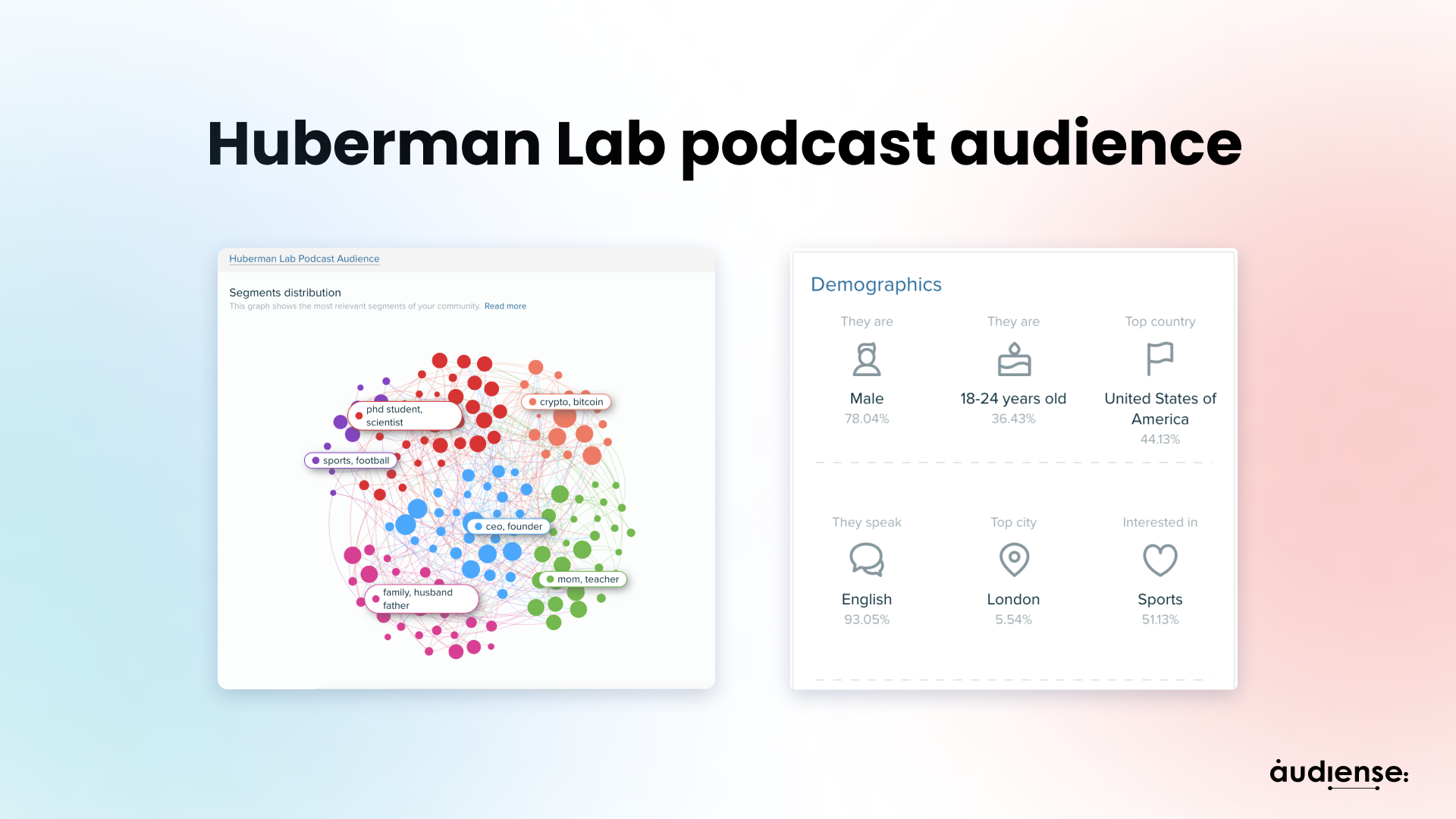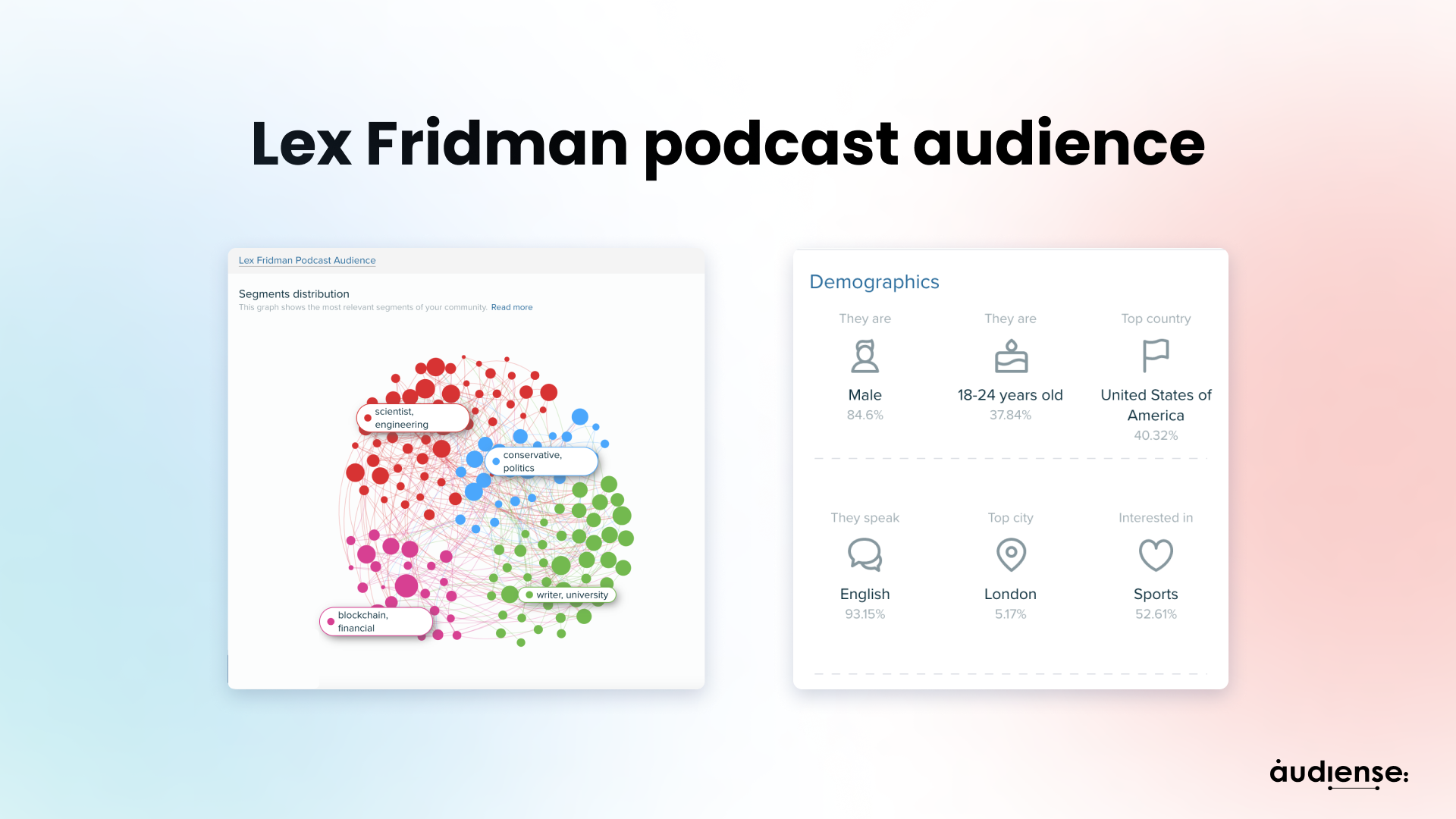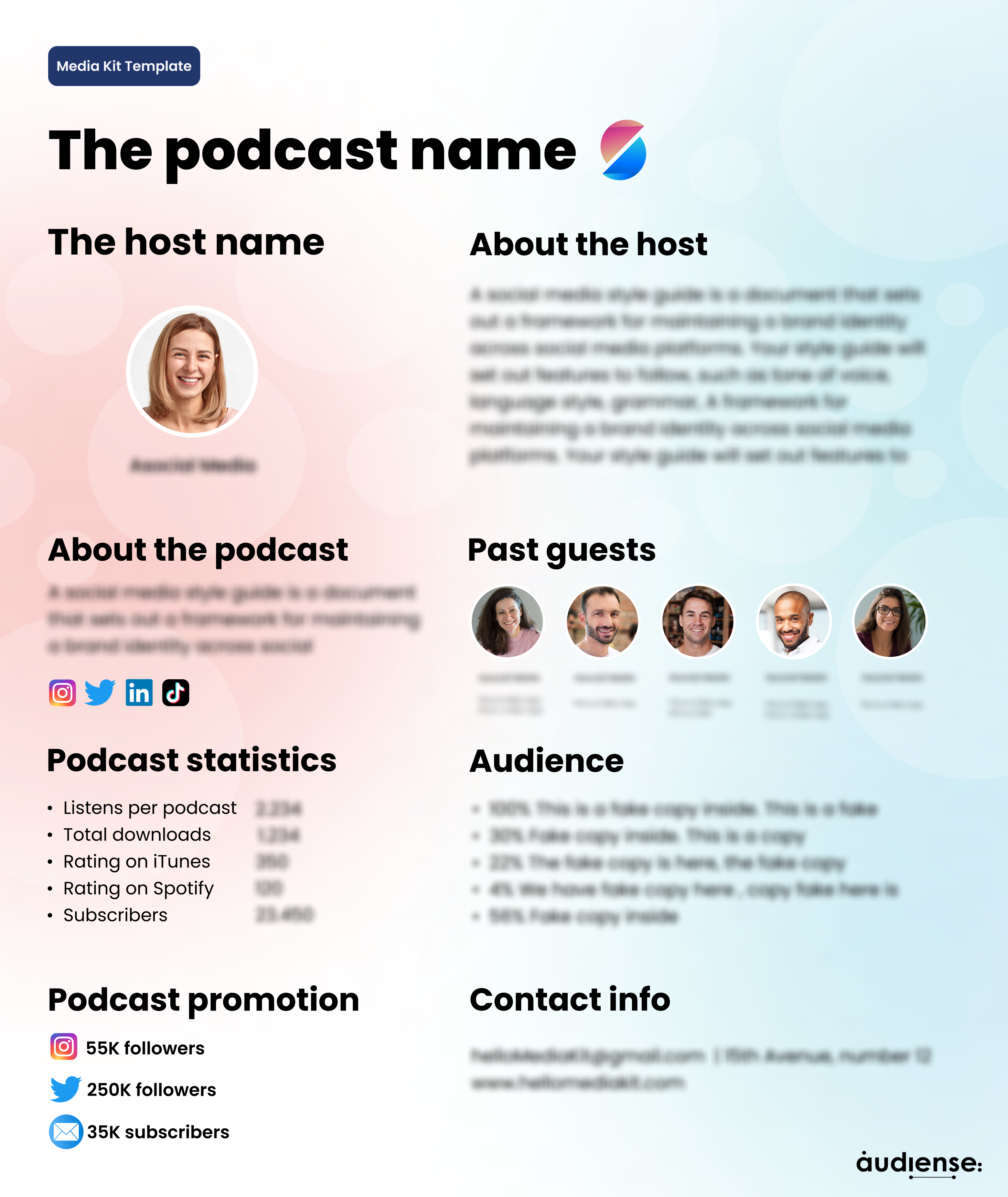How to find the right podcast sponsor using social research
Landing that first sponsorship can be a game-changer for your podcast.
But this can come with a lot of questions.
Is your podcast attractive to potential sponsors? How can you ensure your audience will respond positively to the sponsorships you get? How do you even approach brands for sponsorships?
You’re in the right place. Let’s dive into the ins and outs of how podcast sponsorships work, how to successfully secure one, and how to use audience data to find the right brands to partner with. Plus, we'll show you how to put together a sponsor kit.
Building on what we covered in How to create a winning podcast for your brand using audience intelligence, we will deep-dive into podcast sponsorships using the same top three podcasts as examples.
Before you do anything, you’ll want to arm yourself with as much information about your current audience as possible.
Research your audience to find potential sponsors
Your podcast listeners are your superpower.
The key to landing great sponsorships is knowing your listeners inside and out. Let’s look at some leading podcasts in different categories and how their unique audiences guide their sponsorships.
The Financial Feminist podcast is one of the top business podcasts on Spotify and touts sponsorships such as Treasury (an investing app by women for women), an affiliate program with SoFi (a high-interest savings bank account), and a partnership with Juno (a refinancing loan platform).
The audience segments for this podcast vary. While the podcast focuses on finance, not all who follow it identify finance as an interest.

Financial Feminist host Tori Dunlap leverages her unique (in the finance space) majority female audience to get affiliate sponsorships and partnerships with financial institutions, programs, and apps. Tori offers these brands an opportunity to reach an audience that’s historically harder for them to reach.
The Huberman Lab podcast is the top health and fitness podcast on Spotify and has sponsorships such as Momentous supplements, InsideTracker (an A.I. app that analyzes your bloodwork), ROKA (sports glasses), LMNT (an electrolyte drink), and Athletic Greens (supplements).

Andrew Huberman leverages his audience’s interest in science, health, and fitness to gain sponsorships that hit the sweet spot of evidence-based health and fitness products. Andrew’s audience trusts him with health advice. These brands know that a partnership with Andrew (Professor of Neurobiology at Stanford Medicine) means a lot to his audience.
The Lex Fridman podcast is the top technology podcast on Spotify with sponsorships such as Skiff (an encrypted email platform), InsideTracker (an A.I. app that analyzes your bloodwork), Onnit (brain and fitness supplements), and Blinkist (an app that summarizes non-fiction books).

Lex Fridman looks for sponsorships that appeal to his audience’s interests in science and technology. His position as a researcher at MIT means a sponsorship with his podcast carries a lot of authority. His listeners trust that a brand is worth checking out if he partners with it.
Types of podcast sponsorships
Podcast sponsorships can fall into three main categories; affiliate, cost-per-mile (CPM), or value-based. Each type has pros and cons depending on your podcast type, size, and more.
Affiliate sponsorships
In an affiliate sponsorship model, you are paid based on the number of sales you make for that brand. This usually takes the form of a custom link or promo code to advertise to your audience.
Pros:
- Great for podcasts with high engagement from their listeners.
- Can control how much you promote the product.
Cons:
- Only paid when listeners purchase from the sponsor.
- Affiliate programs may have strict requirements (number of subscribers, traffic, or social media followers).
CPM sponsorships
A cost-per-mile sponsorship pays you for every 1000 downloads an episode gets. The industry average for a 30-second ad is $15-18 per 1000 downloads.
Pros:
- Can estimate how much you will make based on historical data.
- Can promote multiple brands in a single episode to maximize sponsorships
Cons:
- It isn’t valuable for podcasts with less than 1000 regular subscribers.
- Have to renegotiate contracts if your subscriber base grows significantly.
Value-based sponsorships
In a value-based sponsorship, you are paid a flat rate based on average downloads rather than the specific episode’s downloads.
Pros:
- Know exactly how much money you are getting.
- Great for small to mid-size podcasts that don’t have thousands of repeat listeners.
Cons:
- The pressure is on you as a creator to prove that your audience will be responsive to the sponsor and result in a good ROI.
We’ll then cover the three types of ads that would result from a sponsorship.
- Pre-roll ads
- Mid-roll ads
- Post-roll ads
You’ll need to decide which ads you will offer before moving on to the next step and crafting a media kit.
Media kit checklist for your podcast
Before reaching out to potential sponsors, ensure you have all the information you need at your fingertips by preparing a media kit ahead of time.
Media kit checklist:
- Audience data (their interests as well as pain points the sponsor can help with)
- The role your podcast plays in your niche or topic
- Podcast episode analytics (average downloads or views)
- Sponsorship rates
- Sample episodes/clips or trailers with highlights from your show
- Positive review examples
By having everything packaged in a media kit, you’ll have all the information a prospective sponsor needs in one place.

How to get sponsors for your podcast
This section will cover the different ways you can get in front of sponsors, no matter how big or small your podcast is. You need to sell your podcast as a direct line to that sponsor's ideal customer.
If you are pitching directly to brands, here’s a template for you to send along with your media kit.
Hi [NAME],
Introduce yourself - [give them context about who you are and your podcast niche]
I’ve been following [brand] for a while, and I think we could work really well together. [Highlight how your audience aligns with their ideal customer profile and how they’d benefit from a partnership]
My podcast covers [topic/niche]. I’ve attached our media kit if you want to know more, including all the relevant download numbers, audience insights, and more. Please feel free to fire back some questions if there’s anything you’re not sure about: [provide a link to media kit]
You can also find me on the following social media channels.
[Insert link to all relevant social pages]
Let me know your thoughts!
[Your name]
With your media kit and this template to alter as needed, you are ready to go forth and get sponsored!
Key takeaways
Now that we’ve gone through all the details let’s recap what you need to understand about getting sponsorships.
- Make sure you understand your podcast audience before approaching brands for potential sponsorship opportunities.
- Understand the different ways a sponsorship can take form before seeking sponsorships.
- Prepare your media kit before approaching potential sponsors and keep it updated monthly with fresh audience data and reviews.
- Template your emails when approaching sponsors as it’s a numbers game, and your time is valuable.
With this knowledge and templates at your disposal, all that’s left is to pitch your podcast and wait for the sponsorships to roll it.
Learn more about how Audiense levels up your audience research and understand your target demographic completely.






